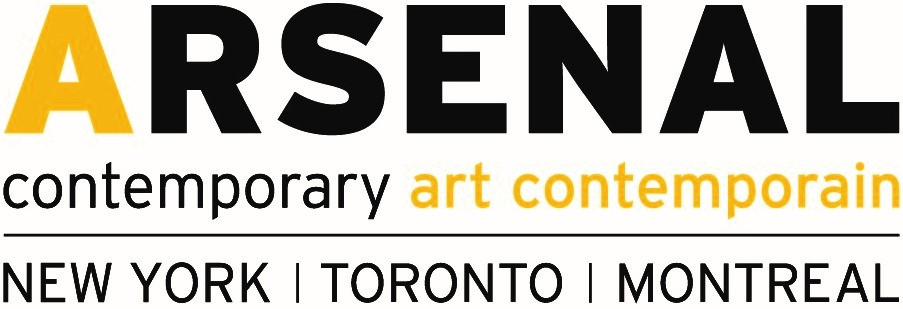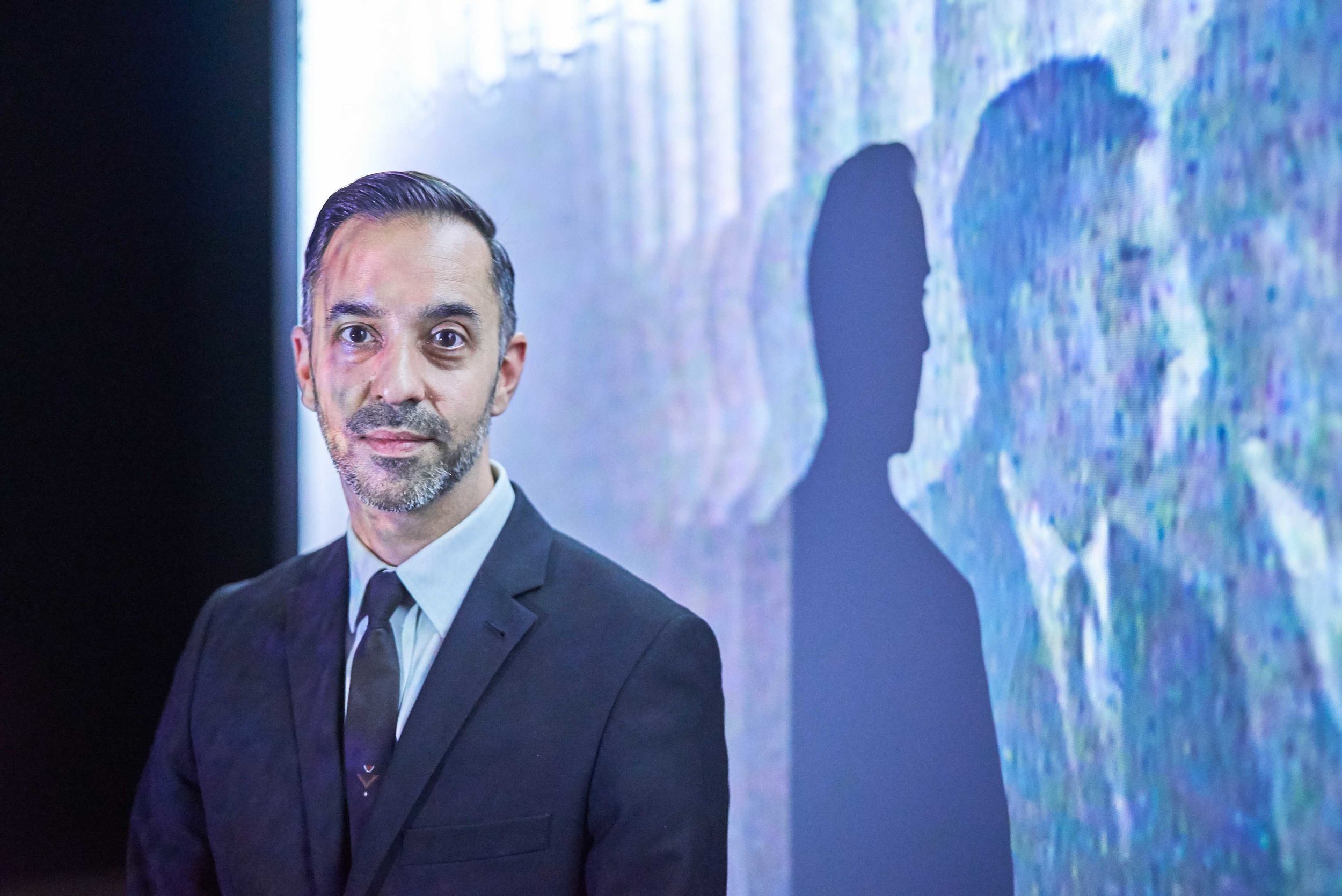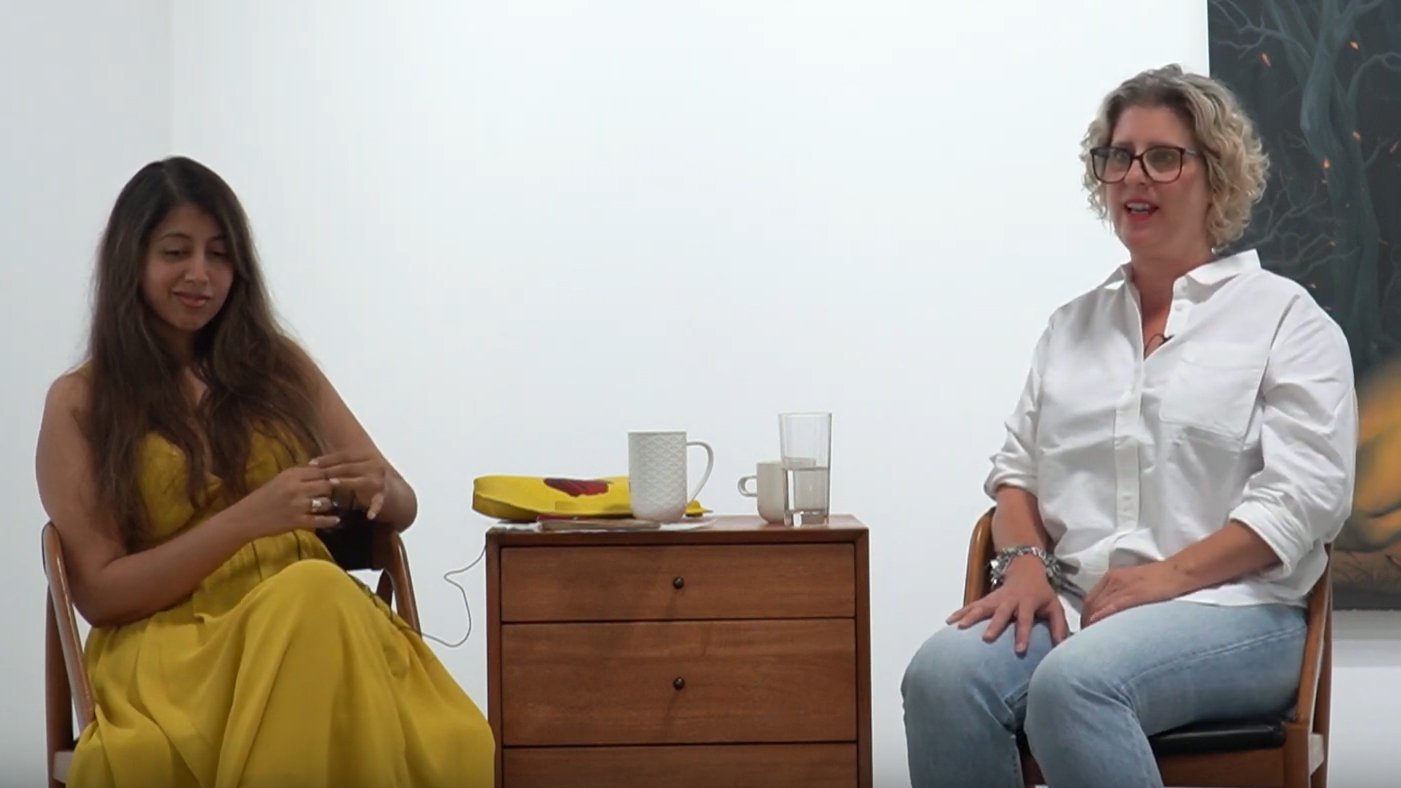In Conversation: Tasman Richardson
INTERVIEW
by anna kovler
Published May 4, 2020
In 1962 Andy Warhol began to make repetitive silkscreens of fatal car crashes that appeared on the front page of major newspapers. His rote, distanced use of somebody else’s life-ending events turned the lens on society’s values in general. How was it that people were consuming disasters as visual candy? Some argued that turning life into a stream of flat images was affecting our ability to care or feel. Others suggested we never cared to begin with, and perhaps even enjoy our neighbour’s demise. Tasman Richardson’s exhibition Kali Yuga at Arsenal Contemporary Art Montreal picks up similar questions in today’s context of selfie culture, dash cams, reality television and the glut of Internet porn.
In Sphere of Influence, Circle of Protection (2019), Richardson compiles a selection of dash cam recordings of car collisions and projects them in the faceted style of a vanity mirror. What is not apparent at first glance is that each car crash has been synced to have the same duration as the rest, giving them an uncanny sense of rhythm and predictability.
Taken together, Richardson’s six immersive media works in Kali Yuga make palpable the effects of a society obsessed with recording and measuring unique experiences. By heightening the affective impact of recording technologies, he makes the uncomfortable truth of technological progress impossible to ignore. Like Narcissus who fell in love with his own image and died as a result, our society may be at risk of fatal self-obsession.
I spoke with Tasman on the occasion of Kali Yuga to find out what motivates his practice and what he’s working on next.
AK: What attracted you to dash cam recordings of car crashes?
TR: I’ve been in a few accidents myself, but what made me most curious was the posting of these very personal experiences. The online sharing and the vicarious thrill of recordings like these. It lets you see through someone else’s eyes and it’s very intimate, but it’s a bit like exhibitionism too. People seem to have this need to be seen as though the measure of how real they are depends on how many people saw or remembered them. With the Internet, we show to an invisible audience we hope is watching, but we also watch with anonymity, so our gaze is divorced from our body. It’s like the panopticon, the prison where the guards see the prisoners in the light, but the prisoners can’t see the guards in shadows. With the Internet, we play both roles at the same time.
AK: In your piece Going Gray (2019) viewers consume a live recording of themselves ad infinitum. What is the idea behind this work?
TR: In Going Gray, I want people to acknowledge that their image has an independent life apart from them. The video mirror is actually a camera that sees and then displays your image. It does this like passing a baton, over and over, not through wires, but just by showing it on TV, and seeing it from across the room. It travels six times this way and comes back to the video mirror to display the aging effect of optical travel. It traverses the whole exhibit before you’ve even taken your next step. The spelling of Gray in this case is a nod to Oscar Wilde’s narcissistic protagonist.
The next piece flips the emphasis. While Going Gray is about collapsing many spaces into one time, The Cave (2019) collapses many times into one space. Peering through slits in a wall you see two people making love while filming themselves on VHS. This recording gets projected on the wall behind them, which becomes the background in the next recording, and so on without end, creating a tunnel effect. Each layer of the tunnel puts the couple farther back in time but the light from the past recordings accumulates into a bright mouth of a cave and quite literally casts light into the future, by lighting up each subsequent recording and finally shedding that light on the audience.
I made this when I was still “intact” prior to having surgery for cancer. It was the last time my partner and I would be intimate while I was still physically whole. When you see yourself in a recording, it’s very intimidating, but as your recording becomes distant and small, it also becomes abstract and feels like someone else. It’s like alchemy; you convert yourselves from subjects to objects. The name is a hint at Plato’s cave.
AK: “Kali Yuga” refers to the Hindu concept of the Age of Vice. Do you think we are currently in an Age of Vice, and what Age will come after?
TR: I’m an agnostic but I love myths. I like the way an ancient myth can influence even a very contemporary culture. According to the myth the cycle just starts over again, so this is the end or winter and next will come spring. I’ve heard one version where God is a singular absolute being and therefore alone, without a reflection. They sleep and they dream the entire universe.
From what I’ve read, there are four stages or “Yugas” and the Kali Yuga is the last stage before a kind of end of world destructive event. The dreamer wakes up and in doing so, destroys everything and everyone in that dream (us in this instance). We live in an age of phantasms, higher resolutions and frame rates and incredibly sophisticated simulations. It sometimes seems like a dream, though, not from just a single being’s perspective. I sometimes imagine that I’m dreaming everyone else. I was told by someone once that whether you’re kind or cruel, you’re doing it to yourself.
AK: What are you working on next?
TR: I’m going to continue exploring time. My next piece uses field recordings but with video instead of traditional mic sounds. I’ll speed up the collected samples, making a month into just one minute. I plan to do all kinds of foley sound effects to match the speed of thrashing trees, decaying leaves, and freezing lake water. Finally, I want to build 12 chambers in a circular corridor, each playing the complete 12 minute (year long) video. Each chamber will be 1 minute or month apart, like singing row row row your boat staggered and delayed. The result should be like existing in “big” time. Walking counter clockwise will suspend or repeat time, like endless deja vu, while walking clockwise will accelerate time, and standing still will feel like being on a very slow carousel while the wall projections creep clockwise past. I don’t have a name for it just yet but I’ll need a grant! I’ll start planning now and hope to have it ready for January 1, 2021.
Tasman Richardson will be presenting Kali Yuga at Arsenal Contemporary Art Toronto (September 2020). Recent past exhibitions include Janus at InterAccess in Toronto (fall 2019), Arsenal Contemporary Art Montreal (fall 2019) and performances at Particle + Wave Media Arts Festival, Calgary (winter 2020).








